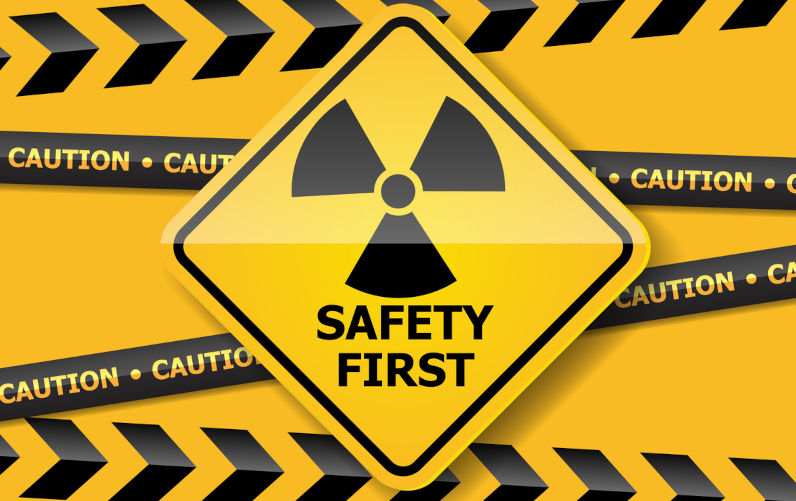Nuclear power is not safe, it’s more dangerous than ever
April 9, 2025
Media and campaign coverage of the rekindled pitch for Australia to embrace nuclear power has focused on the poor economics, the protracted timelines of implementation, and dubious real-world benefits as a climate strategy.
But the most critical issue of all, which should be a showstopper, is being ( almost) completely ignored: Nuclear power is just not safe – indeed, it’s less safe than ever. The issue of safety (and health) seems to have been relegated to history, as somehow outdated, but this is very wrong.
Nuclear power is a terrible idea because it has very high, very long-term risk of catastrophic impacts of radiation on human safety and health, and on the environment. To understand risk, we need to consider both the likelihood (probability) of an adverse event, and the severity of the impact, the consequences.
Proponents of nuclear power often dismiss safety concerns as a thing of the past, suggesting that under normal circumstances, accidents during power generation are unlikely, and better managed in modern reactors. But the consequences of nuclear accident would be catastrophic in severity, affect very large areas and probably human populations, and last a very, very long time.
Understanding the risks of nuclear energy also must consider the whole life-cycle- from mining, transport, processing and power-generation and ultimately long-term disposal of the waste product - the incredibly dangerous plutonium. Whilst there may have been improvements in safety with more modern power plants, under normal circumstances, the risks during mining, transport and especially the risk during “disposal” of the nuclear waste.
The challenge of safe disposal of nuclear waste material has not been solved (although it does seem to have been forgotten). This is not a problem that will go away, at least not .
What’s more, the most critical risks are those when things don’t go to plan. The safe operation arguments assume normal, civil peaceful circumstances, with good management, no corruption, natural disasters, terrorism or military conflict, and strong cyber security. All of which would seem to be becoming more likely in recent times.
There are three increasingly real problems with this assumption, each with very real-world examples of the catastrophic consequences:
- Human error/“accident”: At Chernobyl and Three Mile Island “normal” operations went very wrong. We think we know better now, but that’s what they thought then. Chernobyl remains a wasteland 40 years later, with a 2600 km2 Exclusion Zone uninhabitable for 300 to more than 20,000 years. Enhanced cancer rates across northern Europe are attributed to radioactive dispersion. It’s faded from the headlines, but it’s still a catastrophe with lasting impacts. Three Mile Island reactor suffered a meltdown in 1979 and has still not been fully decommissioned.
- Natural catastrophe: The nuclear power plant at Fukushima, Japan, was devastated by an earthquake and tsunami in 2011. This did not only result in horrendous release of radioactive material into the atmosphere, groundwater and ocean waters across the Pacific. Despite PR management by the company and authorities to downplay the ongoing contamination and leakage, the radioactive material is persistent and the containment unsuccessful.
- Deliberate sabotage or attack, military or “terrorist”, including cyberattacks. Terrorist sabotage or misuse of waste materials has been the subject of countless, terrifying movie plots. But the current war in Ukraine has seen very real and terrifying risk of military damage, deliberate and accidental, to nuclear power plants at Zaporizhzhia, and several other plants. So far, such catastrophe seems to have been avoided, but the risk is horrendous.
We live in an increasingly insecure, unstable and unpredictable world. Australia may seem removed from trouble spots now, but the security situation is changing rapidly, as shown by recent, unexpected conflicts in Ukraine, the Middle East, and as argued by hawks within Australian politics. We’re seeing increasing frequency of cyberattacks on infrastructure and business, even within Australia.
Think about it: a military attack on a solar farm would result in loss of power and a lot of broken glass and mess on site only, with minimal scope for offsite impacts. In contrast, an attack on a nuclear power facility or waste disposal facility would have unthinkable impacts for hundred or thousands of years. Why would we even consider these risks?
Finally, all of these potential disasters will not only have tragic human consequences, but also enormous ongoing health costs and clean-up costs as well. The clean-up at Fukushima is costing 100s of billions of dollars (US). However, this is inadequate. Economic analyses must include not only costs and benefits of optimal scenarios, but the potential risk-weighted costs of dealing with the outcomes when things go wrong. Those costs include costs in both human, environmental and financial terms.
Safety problems for nuclear power may be unfashionable, but they have not gone away, and can’t be dismissed as old news: it’s an ethical/moral issue, not something to be forgotten.
